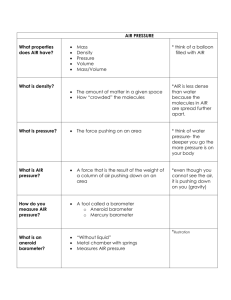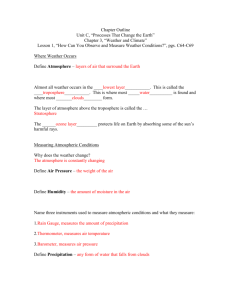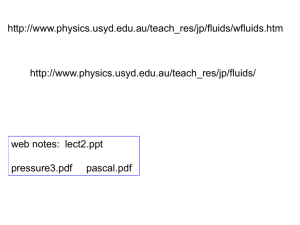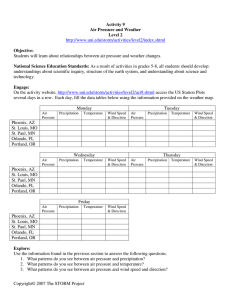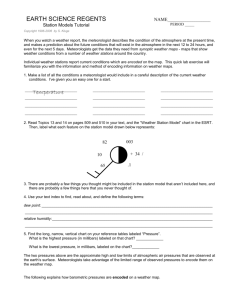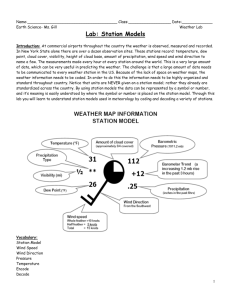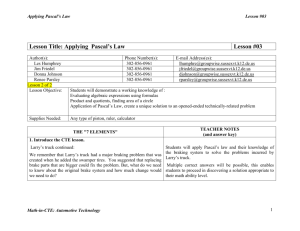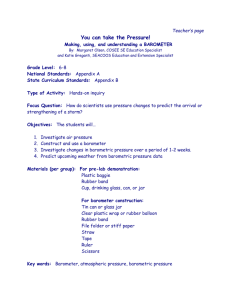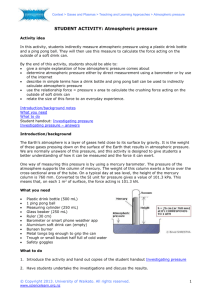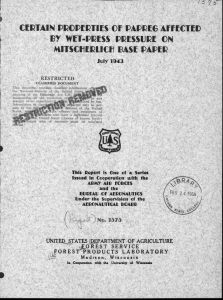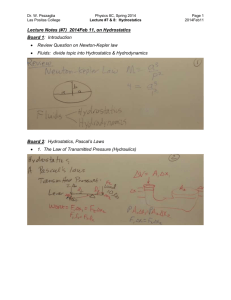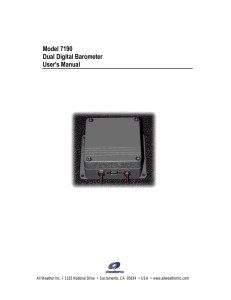Science – Forces in Liquids and Gases
advertisement
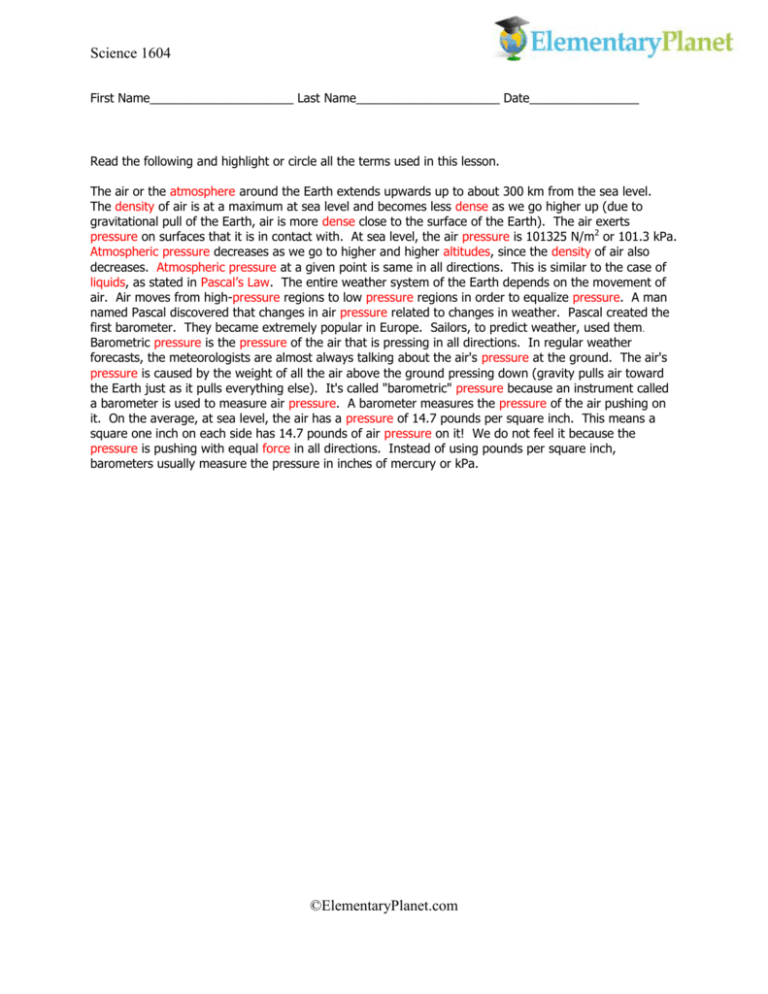
Science 1604 First Name_____________________ Last Name_____________________ Date________________ Read the following and highlight or circle all the terms used in this lesson. The air or the atmosphere around the Earth extends upwards up to about 300 km from the sea level. The density of air is at a maximum at sea level and becomes less dense as we go higher up (due to gravitational pull of the Earth, air is more dense close to the surface of the Earth). The air exerts pressure on surfaces that it is in contact with. At sea level, the air pressure is 101325 N/m2 or 101.3 kPa. Atmospheric pressure decreases as we go to higher and higher altitudes, since the density of air also decreases. Atmospheric pressure at a given point is same in all directions. This is similar to the case of liquids, as stated in Pascal’s Law. The entire weather system of the Earth depends on the movement of air. Air moves from high-pressure regions to low pressure regions in order to equalize pressure. A man named Pascal discovered that changes in air pressure related to changes in weather. Pascal created the first barometer. They became extremely popular in Europe. Sailors, to predict weather, used them. Barometric pressure is the pressure of the air that is pressing in all directions. In regular weather forecasts, the meteorologists are almost always talking about the air's pressure at the ground. The air's pressure is caused by the weight of all the air above the ground pressing down (gravity pulls air toward the Earth just as it pulls everything else). It's called "barometric" pressure because an instrument called a barometer is used to measure air pressure. A barometer measures the pressure of the air pushing on it. On the average, at sea level, the air has a pressure of 14.7 pounds per square inch. This means a square one inch on each side has 14.7 pounds of air pressure on it! We do not feel it because the pressure is pushing with equal force in all directions. Instead of using pounds per square inch, barometers usually measure the pressure in inches of mercury or kPa. ©ElementaryPlanet.com



